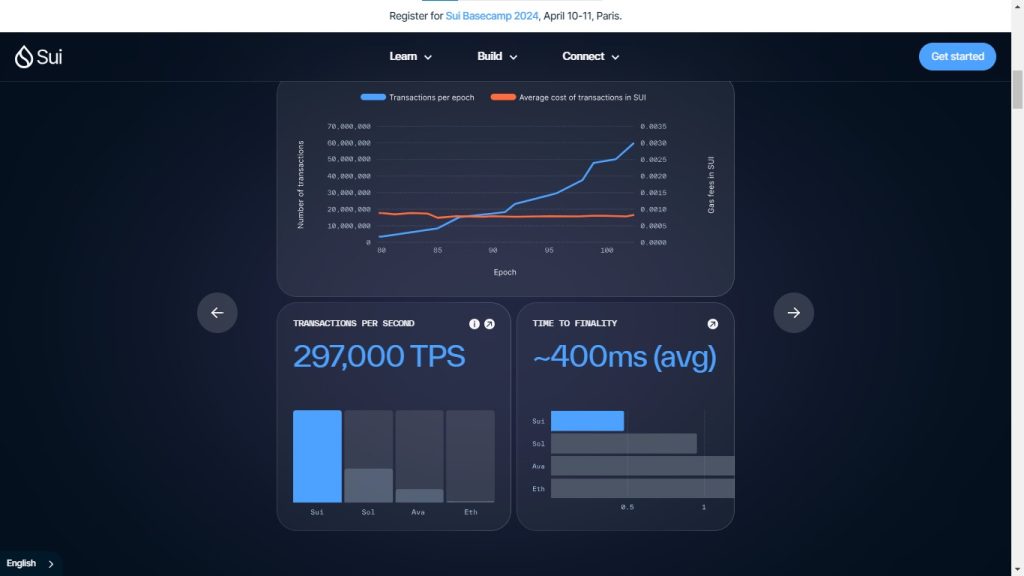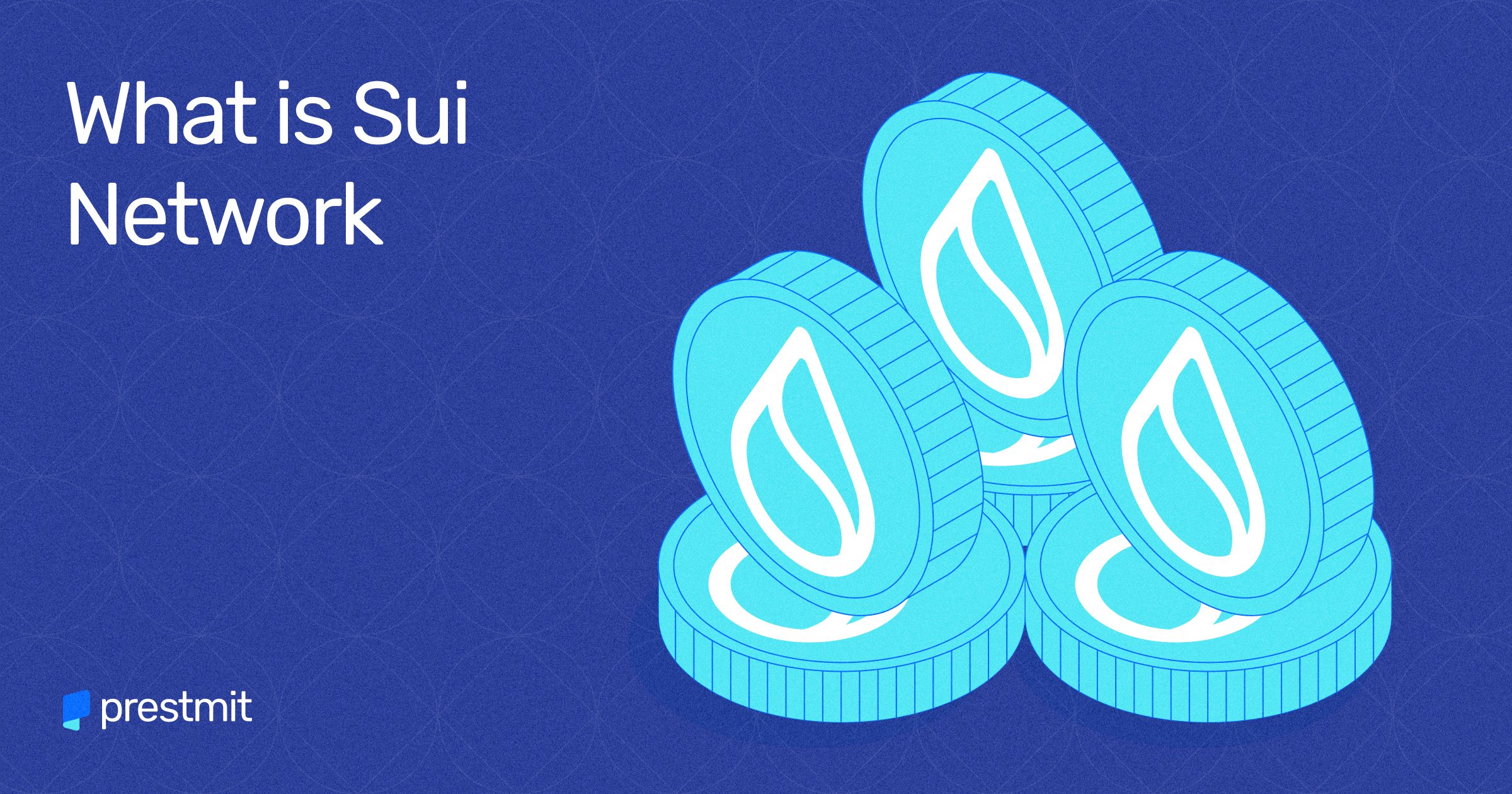Sui is a new blockchain network that boasts low latency. Like the Ethereum and Bitcoin chains, Sui is a level 1 network.
So, why should you be interested in it? You’ll find out in a bit.
Decentralised finance (DeFI) thrives on flexible blockchains. In fact, blockchain technology is vital to the building and maintenance of Web3. There is a necessity for networks that can meet the needs of the current and future Web3 in terms of speed and smart contract execution. This is where Sui comes in.
Today, we’ll look at the new Sui network and why you should keep an eye out for it in 2024.
What is Sui Network?
Sui network is a new layer-1 blockchain at the same level as Ethereum and Bitcoin.
Sui (pronounced Swee) was developed by Mysten Labs, a group of former Meta employees. The network believes it has cracked the code on smart contract execution in terms of speed, high security, and low gas fees. This is possible because of the programming language it was designed with.
The Sui network was built with the Move programming language. This language focuses on enhancing security and speed in transactions. Move is the same language used to build Diem or Libra (another blockchain built by the Mysten Labs group of founders, which never took off).
According to BeInCrypto, Move was chosen to fix the issues with Solidity (the language used to build the Ethereum chain).
SUI Token
SUI is the native token of the Sui network used to pay gas fees, stake, and carry out transactions on the network. Coinmarketcap provides current details on SUI price points and market performance.

How Does Sui Work?
While other blockchains are permissioned, Sui is a permissionless blockchain, meaning there’s no need for a general consensus across the network for validating transactions.
Conventional blockchains have validators that add transactions to blocks in sequences (step-by-step), and this means there’ll be a long queue of transactions waiting to be validated during peak activity on the blockchain. But with Sui, it’s different.
A set of trusted validators handles every set of transactions (divided into epochs of 24 hours). These validators validate transactions through what is called horizontal scaling.
Horizontal scaling is when more machines or processing power (called nodes) are used in a network to increase its ability to handle increasing transaction load.
Now, this doesn’t mean more nodes are added to the network. Adding more nodes makes it vertical scaling. But instead of all nodes validating a single transaction by tracing the chain of transactions on that line, Sui focuses on the singular transaction. This model is called an object-centric model. You can click here to read more on how the Sui blockchain works here.
Why You Should Watch Out For Sui Network in 2024
Is Sui worth looking into? What factors indicate it’s a network to keep an eye on in 2024? Let’s find out below.
1. Focus on Web3 and Asset Ownership
The Sui network is heavily focused on enhancing Web3 by catering to the needs of millions of users. If you’re interested in or are already participating in Web3, you’ll love the security, speed and increased functionality the SUI network affords your operations.
Sui allows users to deploy decentralised applications and non-fungible tokens (NFTs). This support for web3 assets makes it a network to watch out for in 2024. Those who love art will benefit from the integration as it can provide the needed support for gaming, digital art and collectibles.

2. Transaction Speed
One of the problems the Sui network hopes to solve is transaction speeds, and the network employs several tools or fixes to handle the problem. First is the programming language it was built with. Move is a language that zooms in on speed and security. This ensures that the network’s latency is really low.
The second tool is the validation process. Transactions are validated in epochs of 24 hours. Each of these epochs can be validated independently rather than in blocks like it’s done on traditional blockchains.
The parallel execution of transactions increases transaction speed to 120,000 per second compared to Ethereum’s 7-15 transactions per second.
3. Scalability
The Sui network is focused on scaling transactions through parallel processing or execution.
What is parallel processing?
It simply means the blockchain allows multiple smart contracts to be executed simultaneously. In other words, the network identifies independent transactions and processes them simultaneously. The implication is that transaction times are reduced.
This parallel processing is horizontal scaling at work, and the result is accommodation for larger transaction loads per time and lower cost.
Scalability on the Sui network is made possible with two factors
- The MOVE programming language
- The Narwhal-Bullshark-Tusk Consensus algorithm.
Note: The Narwhal-Tusk algorithm consensus focuses on the details of a transaction rather than the entire chain of transactions. For a better understanding, refer to the How Does Sui Work part of this article.
To Wrap Up
Sui network is a new hot dish blockchain developers have cooked up for Web3 users. It tackles the speed problem in smart contract deployment and transactions on the blockchain. It’s also very secure and scalable, more than the traditional blockchains.
Using the MOVE programming language and a proof-of-stake powered consensus algorithm (the Narwhal-Bullshark-Tusk consensus), Sui has increased scalability and improved latency. It’s definitely worth keeping an eye out for in 2024.

